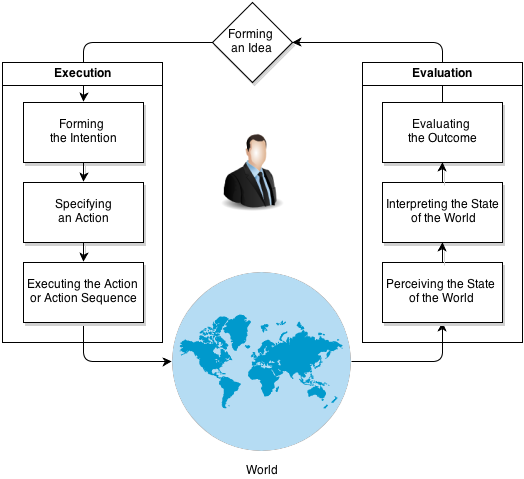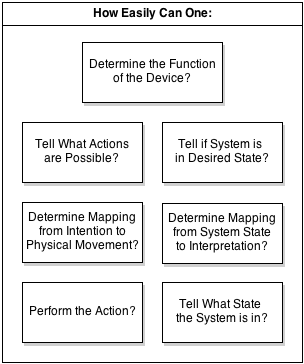Chapter 2: The Psychology of Everyday Actions
If an error is possible, someone will make it. The designer must assume that all possible errors will occur and design so as to minimize the chance of error in the first place, or its effects once it gets made. Errors should be easy to detect, they should have minimal consequences, and, if possible, their effects should be reversible.
Introduction
This chapter of The Design of Everyday Things introduces and formalizes basic concepts and principles of design from observations of everyday objects. Why some objects, as simple as doors, please their users while others frustrate them.
If a task appears simple or trivial, people blame themselves rather than faulty design.
People tend to find causes for events
- casual relationship between 2 things occurred in succession
- perceived relationship between the result and the thing being blamed
blame based on little or erroneous information ⇒ blame/credit can be asserted independent of reality
if everyone perceives the fault to be their own, nobody wants to admit to having trouble This creates a conspiracy of silence, maintaining the felling of guilt and helplessness among users
In general, people attribute
- their problems ⇒ the environment
- problems of others ⇒ others’ personalities
- their successes ⇒ their personalities
- successes of others ⇒ the environment
Definitions
-
Learned Helplessness: people experience failure at a task, often numerous times ⇒ conclude that they simply cannot do the task; they are helpless
-
Taught Helplessness: failure at a task ⇒ generalization of failure at all tasks ⇒ not even trying at a task ⇒ failure at a task
How People Explain Things
- with hindsight, it’s almost impossible to assess how the people could have made the mistake when the course of action is rather logical in that particular situation
- explanations tend to be based on past experiences, which may not apply to the present
Seven Stages of Action

Gulfs
Each gulf reflects one aspect of the distance bteween the mental representations of the person and the physical components and states of the environment. These gulfs present major problems for users.
The Gulf of Execution
“measure of how well the system allows a user to perform the intended action”
Ex. how well does the system provide actions that correspond to the intentions of the person?
The Gulf of Evaluation
“measure of how much effort a user must exert to interpret the physical state of the system and how well the expectations are met”
Ex. Does the system provide a physical representation that can be directly perceived and that is directly interpretable in terms of the intentions and expectations of the person
Using Seven Stages of Action as Design Aids
Principles
- Feedback: full, continuous Feedback about the result of actions
- Visibility: by looking, a user can tell the state of the device and laternatives for action
- Good Conseptual Model: consistency/coherenc in presentations of operations, results, system image
- Mapping: actions ⬄ results, controls ⬄ effects, system state ⬄ what’s visible
Design Questions
